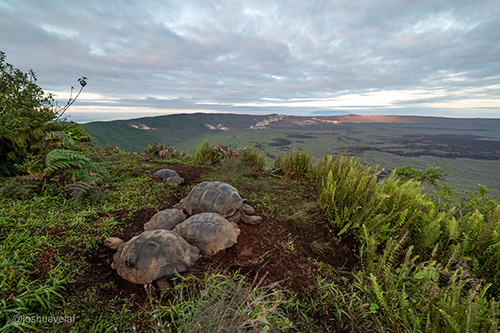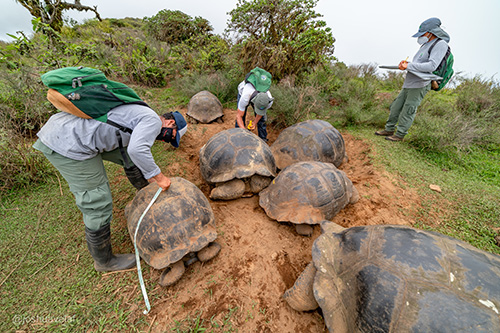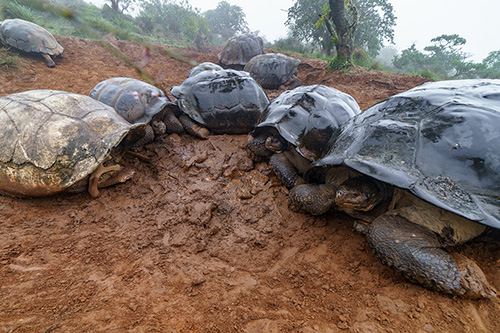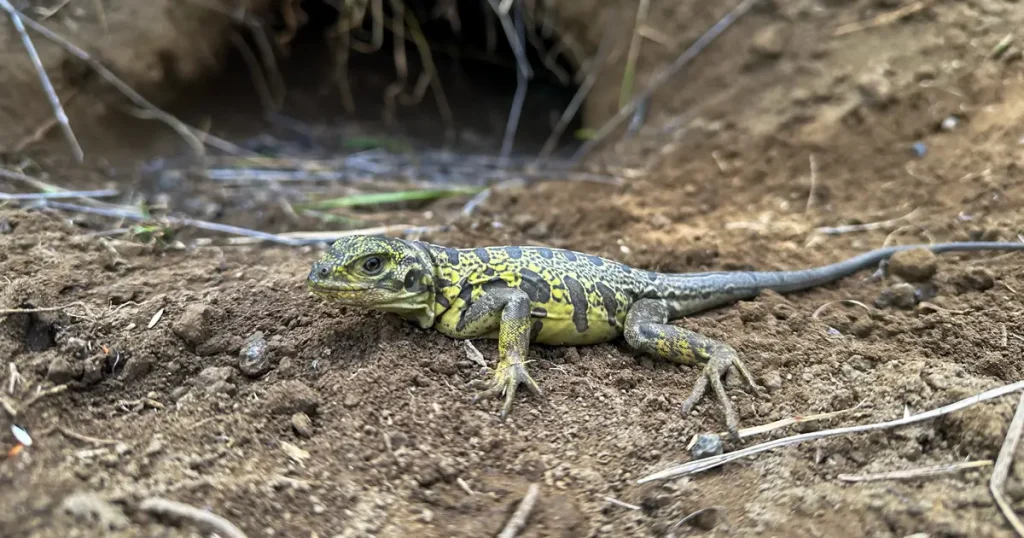Breaking: Giant Tortoise Population on Alcedo Deemed Healthiest in Galápagos
February 1, 2021
According to park rangers and scientists from the Giant Tortoise Restoration Initiative (GTRI), the results of the recent expedition to Alcedo Volcano in the northern part of Isabela Island to conduct a census of the tortoise population there (Chelonoidis vandenburghi) exceeded all expectations, with 4,723 individual tortoises located and marked.

The area of the volcano to be covered during the expedition was concentrated to the summit and eastern and southern slopes, as well as the interior of the caldera — where approximately 90% of the tortoise population is located due to the availability of food in these areas.
Washington Tapia, Director of the GTRI for Galápagos Conservancy and leader of the expedition, confirmed that crews marked 1,745 females, 1,794 males and 1,184 juveniles (read more in his recent blog post). Data suggest that this is a healthy population: in nature, a population of such a large size, with many older as well as younger individuals, and that has one male for each female — as is the case of the Alcedo volcano tortoises — is considered a completely viable population. “Although we have much data yet to process, I estimate that the population exceeds 12-15,000 tortoises total in this region,” Tapia said.

Each crew spent the first three days capturing and marking tortoises in quadrants of approximately 25 square kilometers. They continued marking on the fourth day, but also recaptured previously marked individuals — as this method, along with other variables, will allow estimating the real population of tortoises in this habitat, which is located between 1,300 and 3,700 feet above sea level.
Performing this type of monitoring work requires extreme physical effort. Johannes Ramírez, a park ranger who participated in the expedition, explained, “In a single working day, from 05:00 to 18:00, some groups had to travel up to 18 miles to cover the assigned area and effectively meet the sampling objectives.” However, the most surprising thing for the whole team was to see such a large number of tortoises: “In a single quadrant of about 200 meters, a group located more than 500 tortoises,” he added.

Danny Rueda, director of the Galápagos National Park Directorate (GNPD), indicated that the expedition revealed that this is the population of giant tortoises that is in the best condition in Galápagos, but it is not free of threats; invasive species such as rats and feral cats were also found.
“Finding such a large number of tortoises on Alcedo Volcano confirms that the management programs implemented in that environment have been successful. The eradication of goats and donkeys in 2006 has allowed the giant tortoise population here to flourish. In addition, abundant vegetation was found, which guarantees a permanent source of food for this species,” added Rueda.

Other positive data from the expedition include the discovery of two new nesting areas located on a northwestern plateau and on an eastern slope, and the presence of eight individuals of a rare tree fern — a unique species in Galápagos that was considered extinct in the volcano due to the effect of goats.
As a result of the management actions implemented by the GNPD and its collaborators during the last six decades, Galápagos is likely home to around 60,000 giant tortoises including the populations of the different species — a number that, according to Tapia, is still low considering that more than 200,000 tortoises were removed from the Archipelago in previous centuries.
All photos © Joshua Vela / GTRI



